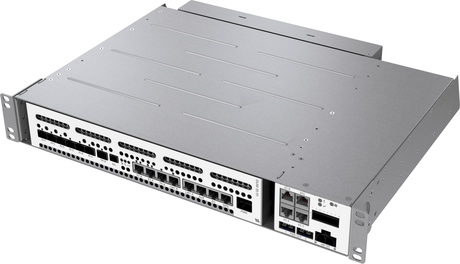Smart meter trials using LTE communications

Trials show that LTE is highly viable as a communications medium for utility smart metering systems.
Research conducted by Ericsson, Telefónica Germany and the E.ON Research Centre at RWTH Aachen University has demonstrated the feasibility of using LTE networks in conjunction with smart meters for the energy sector.
The trials showed that LTE prioritisation, a standard feature of LTE, can provide a highly reliable and flexible alternative to existing powerline or fixed network connections of smart meters.
Smart meter rollout planning is picking up speed in many countries. At the same time, ongoing LTE network deployments are opening new opportunities for utilities to use public networks for communicating with their smart meters.
LTE can provide a highly reliable and flexible communications link from the smart meter to utility IT systems, as the trials showed.
Utility IT systems can use the information collected from smart meters as a tool to help them manage their power networks, particularly in the context of the increasing integration of volatile renewable energy sources, such as wind and solar power, into the power network.
New energy tariffs can be sent to the meter to encourage the use of energy at the time when it is available in the network - for example, from renewable energy on a sunny or windy day.
“We see the trial results as confirmation that public LTE networks, such as Telefónica Germany’s, offer a reliable and cost-effective communications option to utilities companies deploying smart meters,” said Sven Koltermann, head of energy sales in Telefónica Germany.
The trials, using commercial Ericsson LTE base stations, demonstrated that even under heavily loaded radio network conditions, the stream of messages from the smart meters can be received at the central utility IT systems within the expected transmission time period of less than 100 milliseconds.
“As the installation of smart meters progresses, and communications and power network technology develops towards smart grids, more and more business opportunities are opening up for utilities,” said Professor Antonello Monti, director of the Institute for Automation of Complex Power Systems (ACS) at the E.ON Research Centre.
“They can improve the services they offer their customers and to optimise their networks, enabling the large-scale integration of renewable energy sources into the power generation mix while maintaining the highly reliable power network service that society needs to function efficiently,” he added.
Using quality to measure quantity
LTE offers features that will make it the solution of choice for many use cases for utilities. The new features available in LTE Release 13 and beyond will enable further improvements in LTE performance for utility use cases, and when 5G is available, even the most challenging of utility real-time use cases will be addressed by wireless networks.
In the trials, the stream of message from the smart meters was prioritised using the quality of service (QoS) features of LTE. Using prioritisation, smart meter messages were promptly received even in an overload situation, when other traffic on the network had heavy delays.

“We were happy to see that the QoS features of LTE fully met the communication requirements for power network automation, which are far more stringent than other requirements specifications for smart meter measurement acquisition,” said Dr Fiona Willliams, research director at Ericsson.
The advantage of applying the QoS features to the meter traffic is that even in the rare case of overload conditions, the smart meter messages will not be delayed or dropped and will be delivered to serve smart meter applications.
This means that messages sent to a pre-paid meter to reconnect a customer that has just phoned to buy a top-up for their electricity or gas meter will happen instantly, regardless of the network load conditions.
The trials were conducted using an Ericsson LTE base station set up at the ACS Institute of the E.ON Research Centre at RWTH and connected to the Ericsson Core Network facilities available at Ericsson Eurolab in Aachen. The centre’s RTDS power network simulator was used to generate the stream of messages according to the specifications of the smart meter use case provided by Telefónica.
The tests followed an independently conducted set of simulations of the messaging use case on the Ericsson LTE high-performance simulator. The results from the simulation showed that the prioritised MMS message streams were transmitted promptly even in radio network overload conditions. These simulation results were confirmed by the tests sending the messages over the air with the real base station.
RFUANZ report: setting the frequency for success in 2025
Last year brought a lot of internal change for RFUANZ, but the association has hit the ground...
ARCIA update: an extended event calendar for 2025
With the addition of Tasmanian events and a conference in Adelaide in September, 2025 will see...
ARCIA update: plans for 2025
ARCIA will be holding a mixture of workshop, conference and networking events in 2025, in the...





